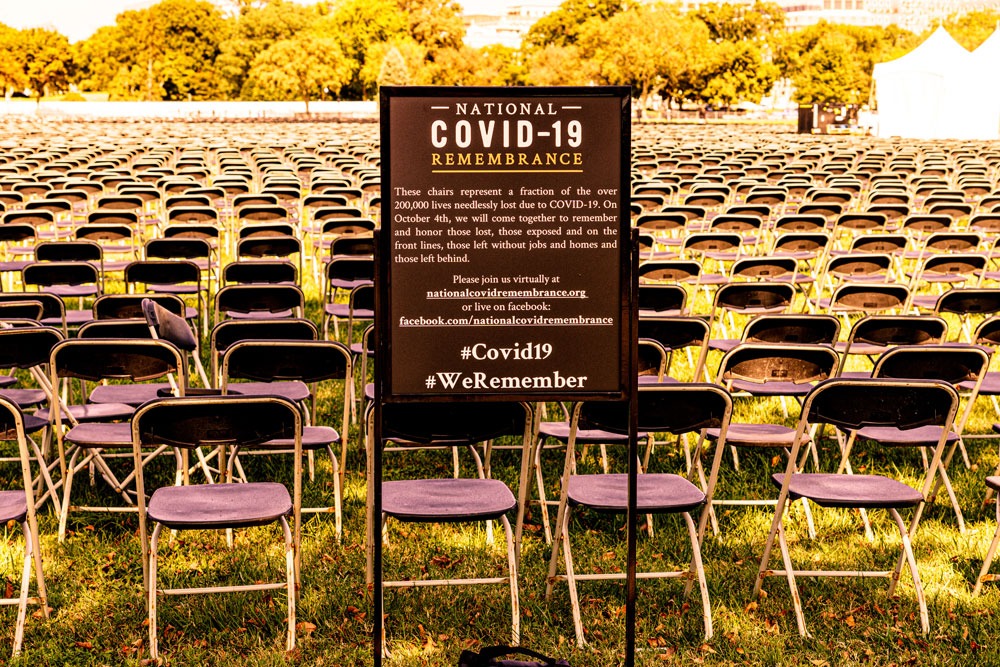
November 14, 2020; Washington Post and the Conversation
The number of known COVID-19 cases in the United States has climbed over 11 million, with the death toll now above 246,000 according to the New York Times’ database. North Dakota and South Dakota have the dubious honor of leading the states in the numbers of new daily cases, with 181.3 in North Dakota and 164.8 in South Dakota per every 100,000 people testing positive. These figures suggest that over one percent of the population of these states has contracted the novel coronavirus in the last week alone! The two states, with a combined population of less than two million people, together are on track to see more than 3,000 die of COVID-19 by March 2021.
It’s a situation “as bad as it gets anywhere in the world,” Dr. William Haseltine told USA Today. And yet, in both states, leadership has fought most regulations that would place limits on people’s freedoms (although North Dakota governor Doug Burgam (R) did issue a statewide mask-usage executive order this past Friday). Is help on the way?
A new coronavirus advisory board convened by President-Elect Joe Biden is seeking to develop new strategies to deal with the pandemic. Given its composition, it is clear task force recommendations will be grounded in science and public health. Among its members are a former Surgeon General, a former director of the Centers for Disease Control and Prevention (CDC), research scientists, and experts in health equity issues.
What’s also notable about this board is that the group looks like the nation it represents. There are five women and nine persons of color among the 13 members. This diversity of gender and ethnicity will be helpful in many ways; the decisions that come will be better, more inclusive, and more acceptable to a skeptical general public. With communities of color being affected the most by COVID-19, having a board with cultural competence is a plus in making its recommendations seem more credible.
For now, this task force can set priorities and plan, but they cannot act until January 20, 2021. Meanwhile, the Trump administration seems oblivious to the surge.
While the task force’s priorities are clear, President Donald Trump this week took up COVID-19 for the first time in months, but only to offer an update on Operation Warp Speed, his administration’s effort to fast-track a vaccine. Trump and his team shared the news that at least 20 million vaccine doses could be ready as early as December, with 25 million to 30 million doses coming each subsequent month. But there was no mention of what to do in the meantime, and no guidance for states.
Sign up for our free newsletters
Subscribe to NPQ's newsletters to have our top stories delivered directly to your inbox.
By signing up, you agree to our privacy policy and terms of use, and to receive messages from NPQ and our partners.
The expectation that this will change after January 20th can be seen in the priorities and concerns that have been laid out by the Biden task force. They include:
- Managing the surge in cases that is affecting most of the US.
- Protecting at-risk populations.
- Increasing the manufacturing of PPE [personal protective equipment], including N95 respirator masks.
- Increasing availability of testing.
- Working with governors and mayors on mask mandates.
Equitable distribution of an effective, safe, and free COVID-19 vaccine is also a task force priority. That plan needs to be developed now, so that when the vaccine is ready, it can be rolled out effectively. The logistics will be daunting; the Pfizer vaccine being discussed must be transported and stored at extremely low temperatures. It also calls for two doses to be taken 28 days apart—a record-keeping nightmare. Reaching and convincing everyone to take the vaccine is also a major challenge.
The good news is that Biden has tapped a team of experts to advise and help guide him and the country on COVID-19. The bad news is that they have no access to current information that federal agencies have to guide their planning and thinking. That is being blocked by the Trump administration.
Jack Chow, a US ambassador for global HIV/AIDS during the George W. Bush administration and a former World Health Organization assistant director general, was alarmed by Trump’s handling of the crisis, observing that, “Right now, you have two parallel universes with an iron wall in between, and if that persists for much longer, the Biden strategy will be potentially slower and weaker than what is needed to take on the third wave.”
As we hunker down for a winter that looks as though it may reprise the many restrictions we saw last spring, some of us will breathe easier knowing that we have a Biden-Harris COVID-19 task force “at the ready.” This is a task force that will be keeping up with science, and we can expect that the president and vice president will not be contradicting their advice and recommendations. This is also a task force that is eager to work with the CDC and other federal agencies to develop public health guidelines and a clear national strategy.
But the transfer of power is still two months away. While we wait, COVID-19 does not. In the meantime, you know what to do: wear a mask, stay six feet apart, and wash your hands. That’s what the experts say, after all.—Carole Levine













